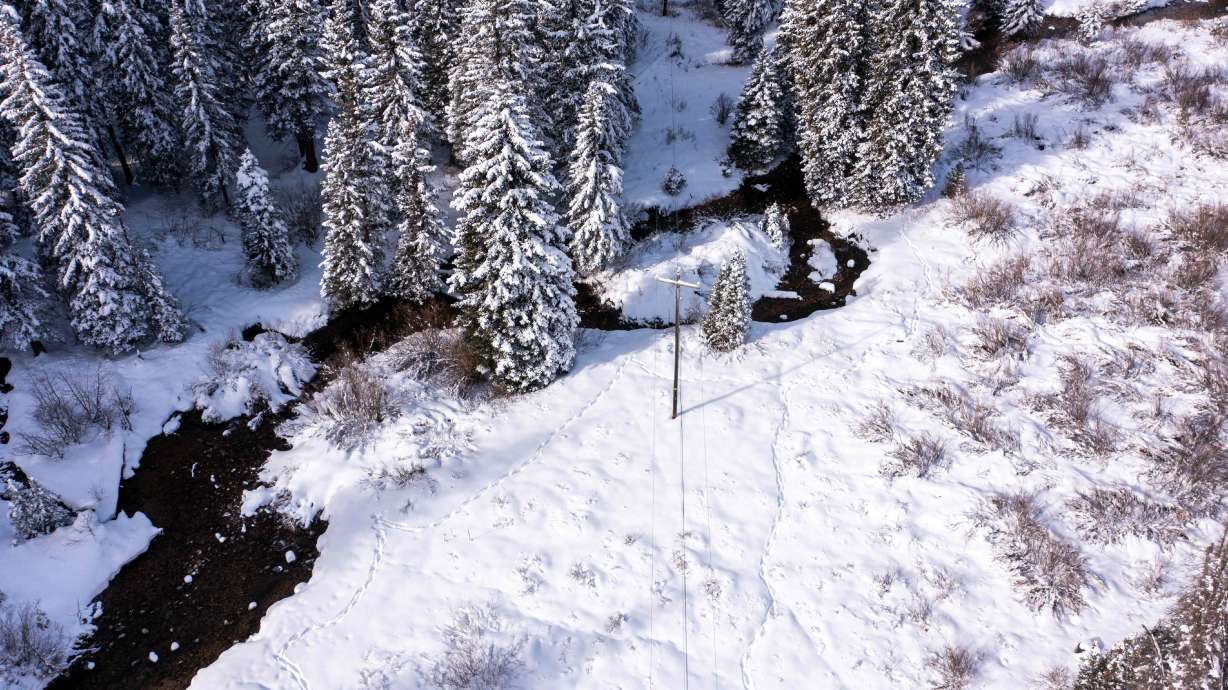Estimated read time: 3-4 minutes
This archived news story is available only for your personal, non-commercial use. Information in the story may be outdated or superseded by additional information. Reading or replaying the story in its archived form does not constitute a republication of the story.
SALT LAKE CITY — The vast majority of Utah remains in drought, but the severity has started to weaken as a result of several major storms that have slammed the state this winter, state water officials say.
While almost one-fifth of Utah remains in at least extreme drought status, no parts of the state are listed in exceptional drought — the worst drought category, according to the U.S. Drought Monitor. About 56% of the state was in extreme drought, including nearly 4% in exceptional drought, at the start of the water year on Oct. 1.
"This is good news, but we have a long road ahead to recover from this prolonged drought," Candice Hasenyager, director at the Division of Water Resources, said in a statement Wednesday. "We must continue to use our water wisely to see the full benefits of the new snow added to our snowpack."
More than 96% of the state remains in at least a moderate drought, including three-fourths of the state listed in severe drought.
However, there is now a sliver of eastern Utah not included in any level of drought category, which emerged earlier this month. It's only 0.7% of the state, which isn't much, but it offers some hope after 100% of the state was listed in at least moderate drought this time last year.
The reduction is the result of a very active pattern this winter, especially over the past three weeks. Utah's statewide mountain snowpack, or the water from the snowfall, is now up to 14.8 inches, 178% of normal for this point in the water year, according to Natural Resources Conservation Service data. The figure is also only 1.1 inches below the normal peak that typically happens in early April.
Snowpack collection and spring runoff patterns account for about 95% of the state's annual water supply.
"These snow totals are a welcome sight and have given a much-needed boost to our snowpack," Hasenyager adds, noting that it's particularly a big development for the upper and lower Sevier basins, which have "seen dwindling water supplies in the last few years."
The storms have also helped the Great Salt Lake rise 1 foot since it hit a new historic low in early November.
Utah isn't the only state benefitting from the wave of precipitation this winter. The National Weather Service's National Integrated Drought Information System issued a report Wednesday, pointing out that a series of nine atmospheric rivers impacted California, beginning on Dec. 26. The storms delivered 80% of California's full seasonal snowpack over the course of about three weeks.
About 40% of California was listed in at least extreme drought three months ago. That number is now less than 1%. Of course, the weight of all the precipitation falling in a short amount of time also resulted in disastrous flooding.
Recent storms in the western U.S. have improved drought conditions by improving soil moisture and filling reservoirs. More in the latest Drought Update: https://t.co/UwOQYCLQWapic.twitter.com/KDkqw12Wjz
— NOAA NCEI (@NOAANCEI) January 24, 2023
There is also very little exceptional drought across the 11 states that make up the West. Exception drought makes up only 0.14% of the region, while 7% of the region is experiencing at least extreme drought conditions. That figure is down from nearly 20% at the start of October.
At the same time, the amount of land no longer in drought is rising. The Drought Monitor lists that almost 17% of the West is no longer in drought, up from about 4% in October — and this point a year ago.
But much like Utah, the West still has a long way to go to recover from the impacts of the ongoing drought.
"Despite the drought improvements in many areas, long-term drought persists in parts of the West," the weather service report states. "Reservoir storage deficits, such as those within the Colorado River system, and groundwater and soil moisture deficits (especially in the Northwest) that have built up over many months to years will require additional precipitation to overcome."









